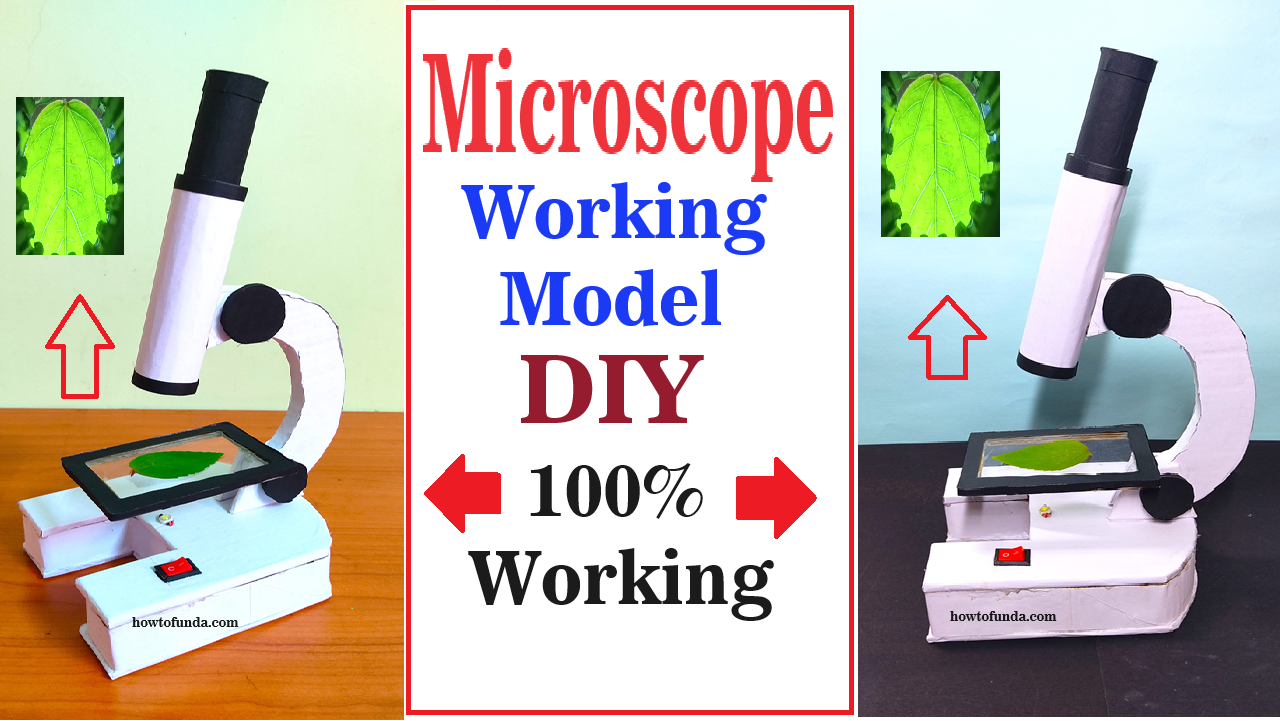A microscope working model using cardboard, LED light, and a transparent sheet can simulate the basic functioning of a microscope by demonstrating how light is focused through a lens to magnify objects.
The model helps explain the principles behind how a microscope magnifies tiny details by using simple materials to mimic the essential components.

Key Components of the Model:
- Cardboard Base and Structure: Cardboard is used to create the body and stand of the microscope, including the tube that holds the lens and a base for stability.
- LED Light: An LED light is used as a light source to illuminate the object being observed, simulating how real microscopes use light to shine through the sample.
- Transparent Sheet: A transparent sheet, such as plastic or a thin piece of glass, acts as a surface to hold the object you want to magnify. It can be placed under the light source to create a visible effect.
- Magnifying Lens: A simple magnifying lens (a convex lens) is used to magnify the object on the transparent sheet. The lens should be placed at the top of the cardboard tube where the observer looks through.
- Mirror or Reflector (Optional): A small mirror or reflective surface can be placed beneath the transparent sheet to direct light upward, enhancing the visibility of the object being magnified.
How It Works( Microscope working model ):
- Preparing the Sample: Place a small object (such as a printed image or leaf) on the transparent sheet or slide, which acts as the stage of the microscope.
- Illuminating the Sample: The LED light is turned on and placed below the transparent sheet. The light passes through the object, making it visible from the top.
- Magnification: When you look through the magnifying lens at the top of the cardboard tube, the light that passes through the object is focused by the lens, magnifying the object. The lens bends the light to make the object appear larger and clearer.
- Observation: As you adjust the distance between the lens and the object (or move the object), you can see different parts of the object more clearly, mimicking the zoom function of a real microscope.
Applications and Learning:
- Real-Life Insight: This model demonstrates how a microscope uses light and lenses to magnify objects, making it a valuable tool for examining tiny details that are not visible to the naked eye.
- Educational Value: It helps explain the concept of magnification, light transmission, and the basic function of microscopes, ideal for science projects or classroom demonstrations.
This working model of a microscope using everyday materials helps visualize how scientific instruments like microscopes function to explore the microscopic world.

